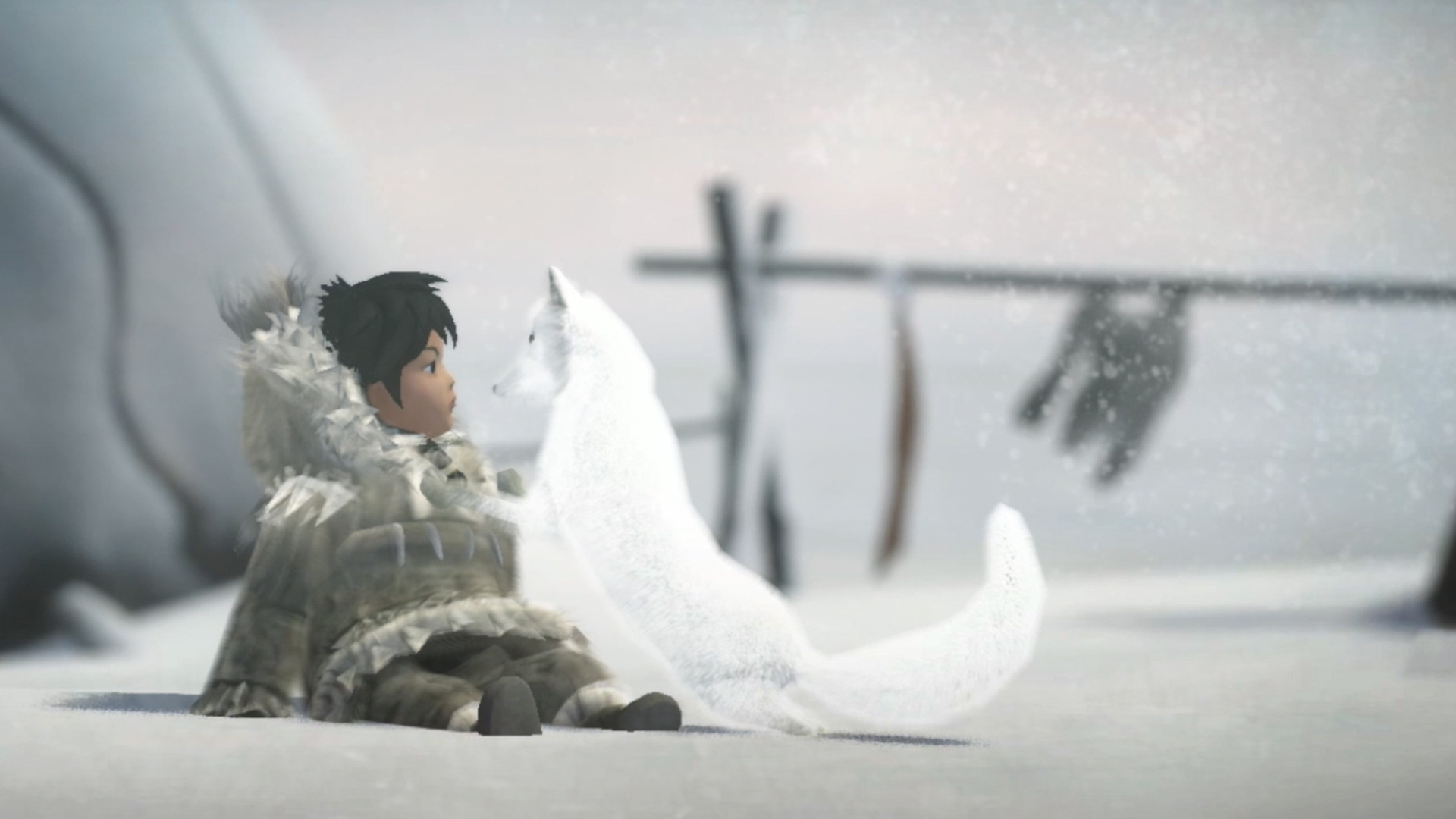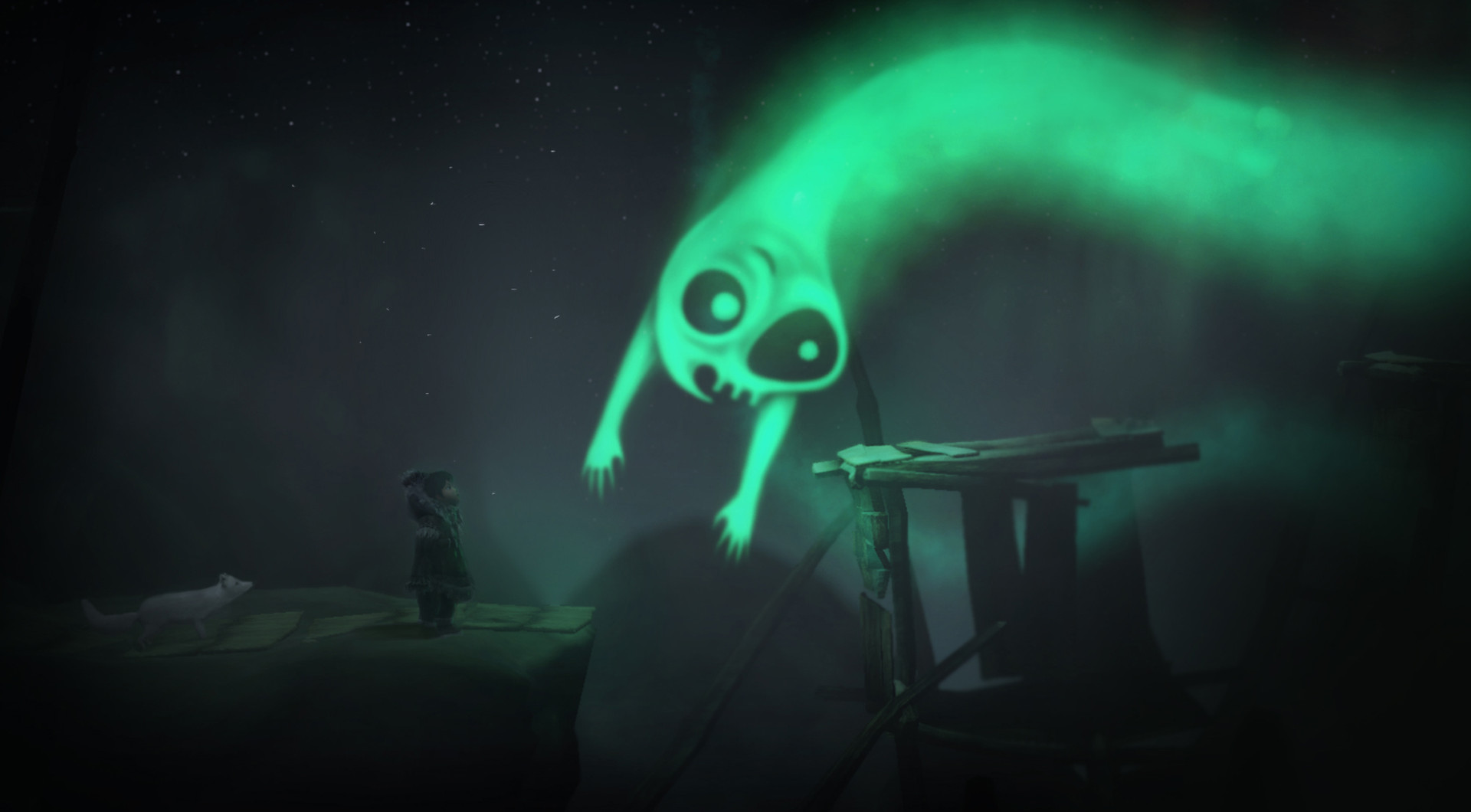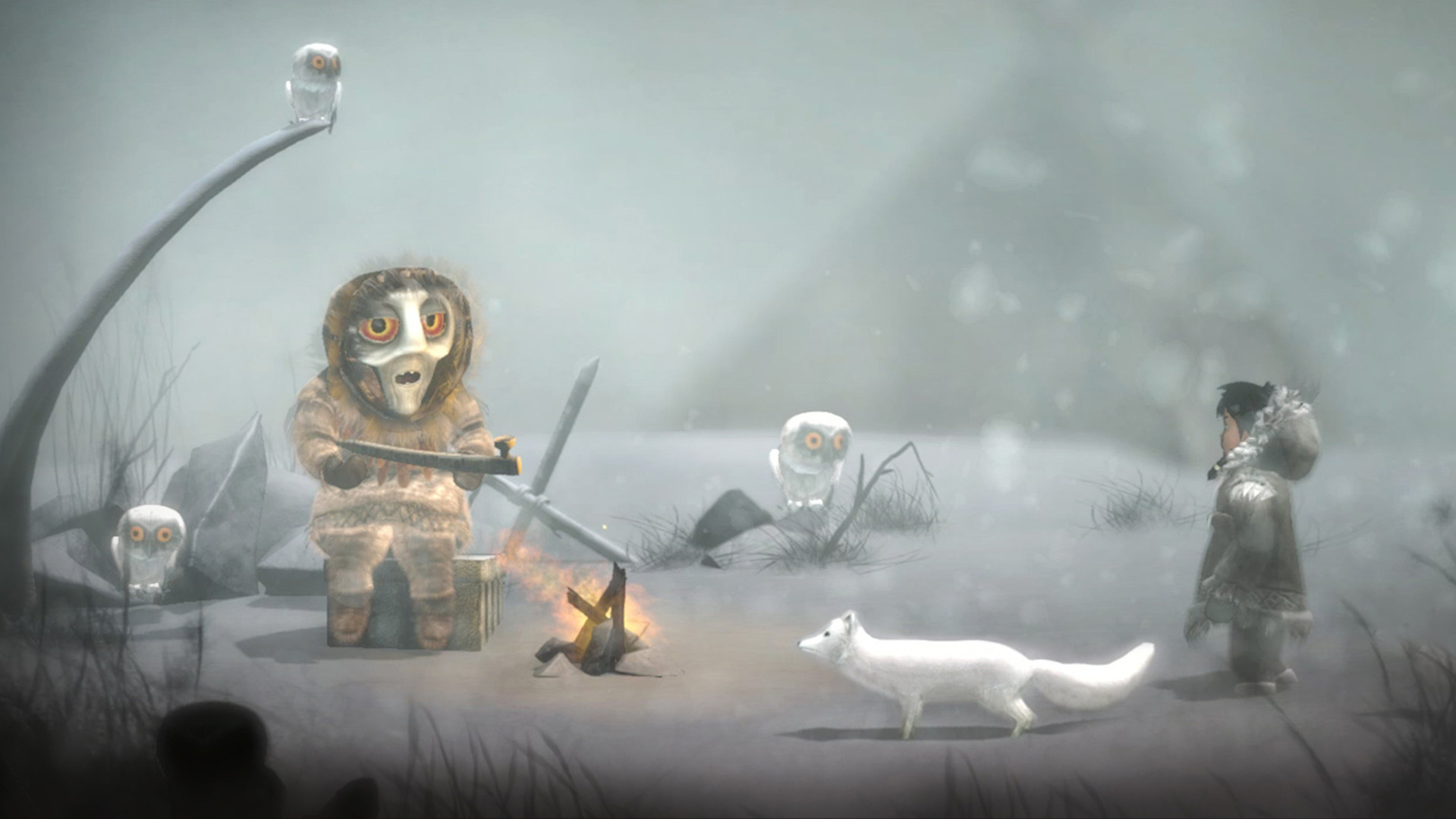
This medium is capable of incredible things, allowing us to not only tell a story, but also give us a chance to interact with and potentially shape it. On the other hand, games can also provide us an interactive means of learning about a specific topic, time in history or, in the case of Never Alone, a culture we rarely see represented. Based on the culture and folktales of Alaska’s Iñupiaq culture, Never Alone attempts to bridge the gap between a gameplay experience and an educational look at a society often forgotten about.
Following in the footsteps of an Iñupiaq girl named Nuna (and her arctic fox), Never Alone focuses on her quest to find the source of a terrible blizzard after it destroys her village. Nuna’s adventure takes her all over Alaska, and throughout you’ll be introduced to the many aspects of the Iñupiaq culture through a series of excellently produced video clips featuring many members of the Iñupiaq community. On their own, these segments are fascinating, but in the context of the game they are incredibly well-realized.

Every video relates to a specific part of Nuna’s journey, giving you the cultural context for each event happening while also providing you with some knowledge about the Iñupiaq way of life. Nuna’s story is fantastical in nature, but it is based on many facets of the daily lives of the Iñupiaq as well as their various stories, both real and fiction. This turns what is essentially a fairly standard platformer into something more remarkable and adds real levity to each gameplay situation, something rarely seen in games.
As mentioned, gameplay focuses on platforming and puzzle-solving. Think Limbo, but instead of dreary forests, you traverse the gorgeous snow-covered landscapes of Alaska. Movement is very weighty and deliberate, with a feeling of real momentum behind each jump. You also have control over Nuna’s friend, the fox, who is more nimble. The two work together to solve various environmental puzzles, utilizing their various strengths and abilities and forcing you to switch between them at a moment’s notice. Despite some minor collision problems and occasional glitches, the core mechanics work together pretty seamlessly.

The real meat of the gameplay is the local co-op, which gives full control of the fox to a second player. This is where Never Alone really shines. Each puzzle becomes less about timing and more about cooperation, lifting the occasional burden of swapping characters in rapid succession. This is especially true in the game’s final sections, which have you racing to use both character’s specific abilities as quickly as possible, quickly turning this breezy platformer into something more nightmarish. In co-op, however, it was still challenging, yet each accomplishment felt more rewarding as a result.
Thanks to its equal focus on education and entertainment, Never Alone is a triumph. It’s a fun, sometimes-challenging romp through Alaska’s Iñupiaq society, as well as significant lesson on a culture we almost never see in games. Its single-player woes can be quickly alleviated with the help of a friend, making for one of the most enjoyable couch co-op experiences you can have. It’s an important game that managed to not only teach me, but found a way to intertwine its lessons in a gameplay experience that enhanced it. Let’s hope this isn’t the last time we see a game spotlight a rich, relatively unknown culture.
Pros: Documentary-style videos and gameplay complement each other, excellent co-op
Cons: Difficulty spike makes the last section frustrating for solo players



















